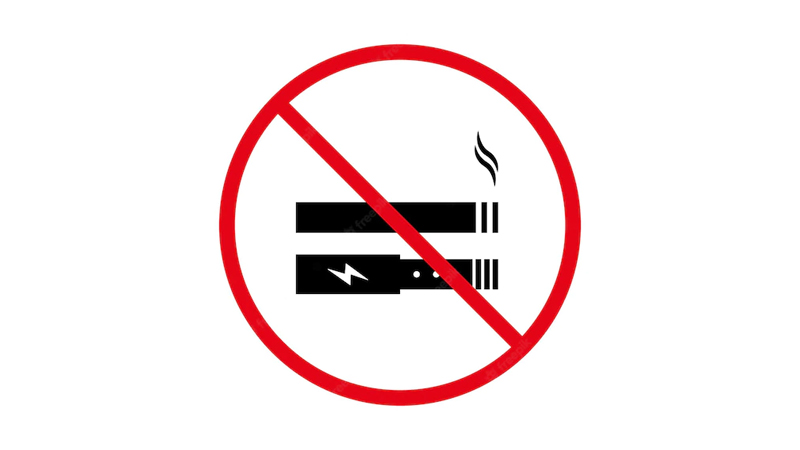With the approval of the Vaporized Nicotine Products Regulation Act by the Senate in December 2021, several groups have expressed concerns about the provisions of the bill. The Department of Health (DOH) has earlier released a statement opposing the “anti-health” vape regulation bill. The DOH said that the vape bill was “retrogressive and contains several provisions that contradict public health goals and international standards”. The Health Department maintains that “vape products are harmful and not risk-free and should be regulated as health products due to their toxic substances and effects”. The Department cited the Global Youth Tobacco Survey, which shows that the prevalence of using electronic cigarettes is increasing among the Filipino youth. Data shows that there is a 110% increase in vape use in just 4 years, from 11.7% in 2015 to 24.6% in 2019. A recent study conducted by the Philippine Pediatric Society (PPS) and the Department of Education (DepEd) also shows that the age of initiation of using electronic cigarettes starts at 10 to 15 years old. The DOH added that this is concerning because several studies noted that the brain’s prefrontal cortex, which is involved in executive and decision-making functions, continues to mature until about the age of 25. This predisposes adolescents and young adults to be more susceptible in initiating smoking and subsequent nicotine addiction. There are many different types of e- cigarettes in use, also known as Electronic Nicotine Delivery Systems (ENDS), with varying amounts of nicotine and harmful emissions.
E-cigarette emissions typically contain nicotine and other toxic substances that are harmful to both users, and non-users who are exposed to the aerosols secondhand. Some products claiming to be nicotine-free have been found to contain nicotine. Evidence reveals that these products are harmful to health and are not safe. However, it is too early to provide a clear answer on the long-term impact of using them or being exposed to them. They are particularly risky when used by children and adolescents. Nicotine is highly addictive and young people’s brains develop up to their mid-twenties. Exposure to nicotine of children and adolescents can have long-lasting, damaging effects on brain development and there is risk of nicotine addiction. Furthermore, there is a growing body of evidence in some settings that never- smoker minors who use ENDS at least double their chance of starting to smoke conventional tobacco cigarettes later in life. ENDS use increases the risk of heart disease and lung disorders. They also pose significant risks to pregnant women who use them, as they can damage the growing fetus. ENDS also expose non smokers and bystanders to nicotine and other harmful chemicals. Exposure of children to ENDS liquid continues to pose serious risks. There is a risk of the devices leaking, or of children swallowing the liquid, and ENDS have been known to cause serious injuries, including burns, through fires and explosions.
There is growing evidence that ENDS could be associated with lung injuries and in recent times e-cigarette and vaping have been linked to an outbreak of lung injury in the USA. This is described by the United States Centers for Disease Control and Prevention (CDC) as ‘e cigarette or vaping associated lung injury’ (EVALI), which led the CDC to activate an emergency investigation into EVALI on 17 September 2019. The CDC says “as of 14 January 2020, there have been a total of 2,668 cases of EVALI reported from all 50 states, the District of Columbia, Puerto Rico, and the US Virgin Islands, including 60 deaths confirmed in 27 states and the District of Columbia. Among 2,022 hospitalized cases with information on substances used, 1,650 (82%) reported using any THC-containing product, and 1,162 (57%) reported using any nicotine- containing product; 669 (33%) reported exclusive THC containing product use, and 274 (14%) reported exclusive nicotine- containing product use.” Further information on this incident, including a strong link of the EVALI outbreak to Vitamin E Acetate and the latest report, is available at https://www.cdc.gov/tobacco/basic_information/e cigarettes/severe-lung- disease.html, which is updated every week, as the evidence is not sufficient to exclude the contribution of other chemicals. At least five other countries have initiated investigations to identify cases of lung injuries related to the EVALI cases reported in the US.
Are e-cigarettes more or less dangerous than conventional tobacco cigarettes?
It is difficult to generalize on the risk to health of ENDS as compared with cigarettes or other tobacco products, as this is contingent on a range of factors. Both tobacco products and ENDS pose risks to health. The safest approach is not to use either. The levels of risk associated with using ENDS and/or tobacco products are likely to depend on a range of factors, some relating to the products used and some to the individual user. Factors include: product type and characteristics, how the products are used, frequency of use, how the products are manufactured, who is using the product, and whether product characteristics are manipulated post-sale. Toxicity is not the only factor in considering risk to an individual or a population from exposure to ENDS emissions. These factors may include the potential for abusing or manipulating the product, use by children and adolescents who otherwise would not have used cigarettes, simultaneous use with other tobacco products (dual or poly use) and children and adolescents going on to use smoked products following experimentation with ENDS. Further, not all ENDS are the same and the risks to health may differ from one product to another, and from user to user.


Are ENDS addictive?
ENDS contain nicotine, which is highly addictive, and ENDS use involves the inhalation of a nicotine-infused aerosol.
Are secondhand ENDS emissions dangerous?
The aerosols generated by ENDS typically contain toxic substances. ENDS pose risks to both users and non-users.
What are the policy options for regulating ENDS?
How a country approaches ENDS will depend on factors particular to its situation. ENDS are currently banned in over 30 countries worldwide. In others they are regulated as consumer products, as pharmaceutical products, as tobacco products, other categories or totally unregulated.
Where they are not banned, WHO recommends that ENDS be regulated.
Regulatory objectives include:
- Preventing initiation of ENDS use by non-smokers and children, such as by preventing or restricting advertising, promotion and sponsorship, and restricting flavours that appeal to children
- Minimizing as far as possible potential health and/or risks to ENDS users, such as by regulating product characteristics
- Protecting non-users from exposure to their emissions, such as by prohibiting ENDS use in indoor spaces where smoking is not permitted
- Preventing unproven health claims
- Protecting public health policies from commercial and other vested interests
What role do ENDS play in smoking cessation?
The scientific evidence regarding the effectiveness of ENDS as a smoking cessation aid is still being debated. To date, in part due to the diversity of ENDS products and the low certainty surrounding many studies, the potential for ENDS to play a role as a population-level tobacco cessation intervention is unclear. To truly help tobacco users quit and to strengthen global tobacco control, governments need to scale up policies and interventions that we know work. Tried and tested interventions, such as brief advice from health professionals, national toll-free quit lines and cessation interventions delivered via mobile text messaging is recommended. Where economically feasible, governments should also consider promoting nicotine replacement therapies and non-nicotine pharmacotherapies for cessation.
Sources: Department of Health (DOH); World Health Organization (WHO)







